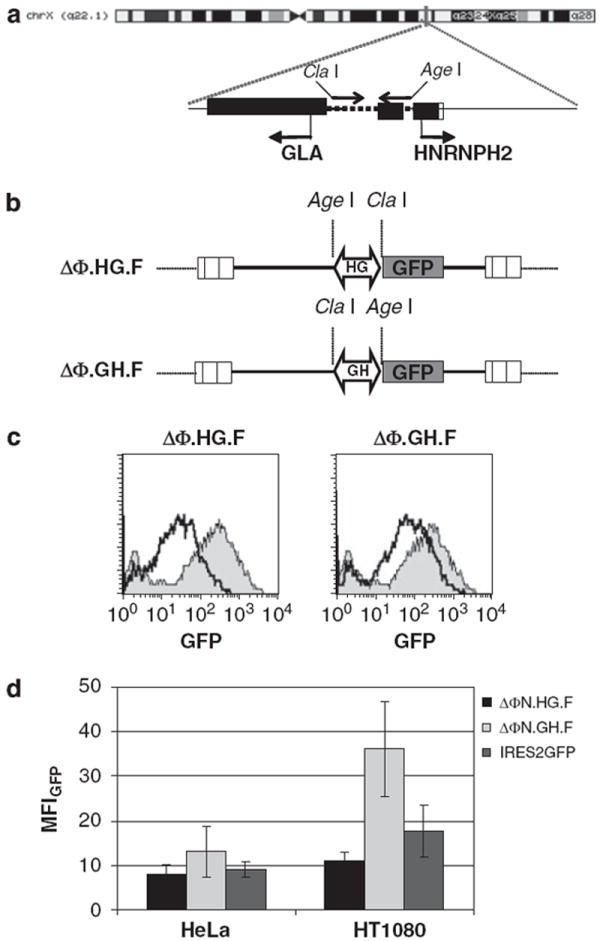Figure 1.

Construction and functional assays of foamy virus (FV) vectors with an endogenous bidirectional promoter (a) Genomic organization of the bidirectional promoter located on chromosome Xq22 in the intragenic region between the alpha-galactosidase (GLA) and the heterogeneous nuclear ribonucleoprotein H2 (HNRNPH2) genes. A 402-bp region (dotted line) was PCR amplified with primers carrying ClaI and AgeI restriction sites and subsequently cloned in the deleted foamy viral vector backbone ΔΦ. (b) Illustration of the FV viral constructs generated after insertion of the putative promoter in either orientation. HG denotes the transcription towards the GLA gene, whereas GH denotes transcription towards the HNRNPH2 gene. An enhanced green fluorescent protein (EGFP) reporter gene was placed downstream of the promoter in sense orientation relative to viral transcription. (c) Transduction of HT1080 cells with ΔΦN.HG.F and ΔΦN.GH.F vectors carrying the EGFP expression cassette. Flow cytometry analysis of EGFP expression in comparison with cells transduced with FV vectors carrying a standard PGK promoter (filled histogram). (d) GFP mean fluorescence intensity (MFI) levels from an IRES2GFP vector were compared with the MFI levels generated from the bicistronic ΔΦ.N.HG.F and ΔΦ.N.GH.F vectors. Results from at least three independent experiments with s.d. are shown.
